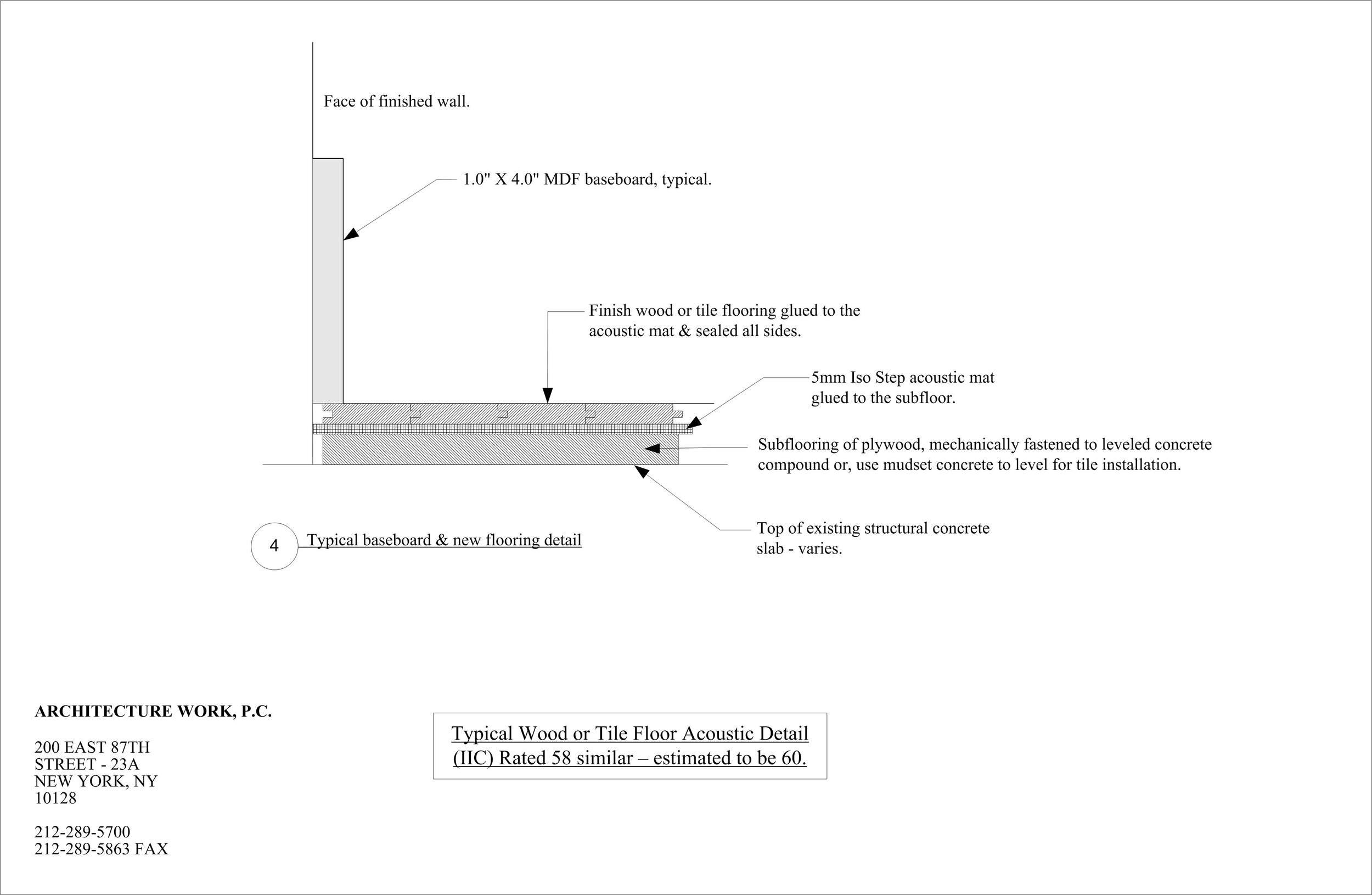ACOUSTIC DETAILS AND THE NYC NOISE CODE PART 3
ACOUSTIC DETAILS AND THE NYC NOISE CODE PART 3
By William Robert King, R.A. on Mar 10, 2017 1:25:01 PM
William Robert King, R.A.
Architecture Work P.C.
QUES – What’s a basic acoustic floor design?
ANS - In new modern high-rise buildings where the basic floor construction is concrete, the most common element is a layer of continuous sound absorption matting bonded to the slab and then finishes are usually glued to the matting. The most important advice is to follow the manufacturer’s installation instructions to the letter or you may make things worse! If you’re not sure, contact the manufacturer & get their advice. In existing buildings of older construction, many times wood flooring (parquet usually) is glued down directly to the slab. It is possible to just overlay the matting and bond the new finish over, but this is highly not recommended in our opinion – the possibility of introducing a delamination under the matting will only amplify the problem. We always have the floor finishes stripped to bare concrete & have the underlying glue or mastic tested for asbestos and removed to a bare clean surface or properly encapsulated. We then specify appropriate leveling compounds over which is installed a mechanically fastened layer of tongue & groove plywood. This is now the smooth clean level surface on which we can bond the acoustic matting for most wood flooring. Tile & stone can simply omit the plywood subfloor & use mudset or thinset directly, again as per manufacturer’s instructions. Note any nails or fasteners that penetrate the matting will compromise the acoustics!
QUES – Will more matting have a better acoustic effect?
ANS – Conditionally yes, but there is a point of diminishing returns on cost verses performance. First of all, “noise” emanates from all sources, so having a quiet floor doesn’t help if the windows are open & a train’s going by, so common sense helps. Also machines or mechanical equipment that penetrate the barriers negate the acoustics as well, so all the aspects of sound must be considered. Regarding floors in particular, we find that a 5mm thick acoustic mat, properly installed over a mechanically installed subfloor and under tile or wood (using similar published lab tests of comparable assemblies) will achieve an IIC (Impact Isolation Class) rating of 53, which is at least 3 points above the NYC Noise Code of 50 for spaces above “living areas”. Using 10mm thick matting (twice the price of 5mm) on the same assembly has been tested to achieve a rating of 59. The Code prescribes a rating of 60 for spaces above bedrooms – this is a tough standard, but any increase in additional slab thickness, subflooring or just adding a carpet will get you the desired result at lower cost. The cheapest is carpeting on a good pad – over 80!


